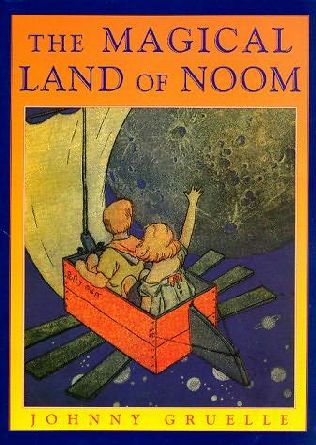
I’m referring to my reaction to some news about the upcoming series 5 of Doctor Who. I realize that this is pretty old news (it was released back in May, and I didn’t even know it!), but I still want to blog about it.
As I’ve probably observed a thousand times: over the course of 46 years and 11 incarnations, the Doctor seems to have gradually become both younger and hotter. William Hartnell was 55 when he began his career as the First Doctor, and Matt Smith, who will portray the Eleventh Doctor in Series 5, is only 26 – the youngest Doctor to date. Needless to say, Doctor Who’s target audience has shifted, over the years, from kids and hardcore sci-fi geeks, to adults in general; especially young adults. (No, not just “young women”, because hey – the Doctor’s female assistants have always been more-or-less young and pretty.)
In general, I’m okay with all this – after all, neither an actor’s age, nor his level of attractiveness will affect how well he can portray everybody’s favorite Time Lord. If a guy can act and look good at the same time - I say, all the better! But I’m a little concerned about what this upcoming season will bring in regards to the Doctor – and relationships.
When the TV series first started out, the Doctor was portrayed as an almost asexual being: the writers generally avoided allowing the Doctor to become romantically involved with his female assistants, regardless of the fact that the two always lived together in the TARDIS. For this reason, I love the early incarnations of the Doctor – I think the “no romance” policy lent such an air of mystery and other-ness to his character.
This policy was (most significantly) discarded in season 2 of the new series – although they never kissed or spoke explicitly about the nature of their relationship, Doctor #10 and his assistant, Rose Tyler, obviously had a thing for each other. Now, there are things that I like about this arrangement, too. It raised an important question: though the Doctor isn’t human biologically, does he have a human heart and soul? Given his staggering age and amount of life experience – not to mention the sheer responsibility of being the protector of the universe – is he capable of loving a woman the way a human man can love? This is a question without answer – ardent Whovians will be able to conjecture for forever…and ever…
So, what kind of relationship do I want the Eleventh Doctor and his new companion, Amy Pond, to have? To be honest, I want it to be entirely platonic. I mean, in all truth, there is already plenty of chemistry in a close-knit boy-girl friendship. After all the sadness and turmoil of #10/Rose – not to mention poor Martha’s season-long unrequited love story – I’m ready for something a little lighter. I can’t wait to see what Russell T. Davies delivers!
All of this being said, I just have to add something about HOW MUCH I LOVE #11’s outfit. Bow tie + suspenders + tweed jacket = dorkalicious excellence.
Oy…2010 is wayyyyy too far away…
As I’ve probably observed a thousand times: over the course of 46 years and 11 incarnations, the Doctor seems to have gradually become both younger and hotter. William Hartnell was 55 when he began his career as the First Doctor, and Matt Smith, who will portray the Eleventh Doctor in Series 5, is only 26 – the youngest Doctor to date. Needless to say, Doctor Who’s target audience has shifted, over the years, from kids and hardcore sci-fi geeks, to adults in general; especially young adults. (No, not just “young women”, because hey – the Doctor’s female assistants have always been more-or-less young and pretty.)
In general, I’m okay with all this – after all, neither an actor’s age, nor his level of attractiveness will affect how well he can portray everybody’s favorite Time Lord. If a guy can act and look good at the same time - I say, all the better! But I’m a little concerned about what this upcoming season will bring in regards to the Doctor – and relationships.
When the TV series first started out, the Doctor was portrayed as an almost asexual being: the writers generally avoided allowing the Doctor to become romantically involved with his female assistants, regardless of the fact that the two always lived together in the TARDIS. For this reason, I love the early incarnations of the Doctor – I think the “no romance” policy lent such an air of mystery and other-ness to his character.
This policy was (most significantly) discarded in season 2 of the new series – although they never kissed or spoke explicitly about the nature of their relationship, Doctor #10 and his assistant, Rose Tyler, obviously had a thing for each other. Now, there are things that I like about this arrangement, too. It raised an important question: though the Doctor isn’t human biologically, does he have a human heart and soul? Given his staggering age and amount of life experience – not to mention the sheer responsibility of being the protector of the universe – is he capable of loving a woman the way a human man can love? This is a question without answer – ardent Whovians will be able to conjecture for forever…and ever…
So, what kind of relationship do I want the Eleventh Doctor and his new companion, Amy Pond, to have? To be honest, I want it to be entirely platonic. I mean, in all truth, there is already plenty of chemistry in a close-knit boy-girl friendship. After all the sadness and turmoil of #10/Rose – not to mention poor Martha’s season-long unrequited love story – I’m ready for something a little lighter. I can’t wait to see what Russell T. Davies delivers!
All of this being said, I just have to add something about HOW MUCH I LOVE #11’s outfit. Bow tie + suspenders + tweed jacket = dorkalicious excellence.
Oy…2010 is wayyyyy too far away…




